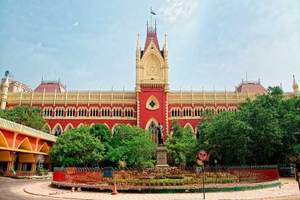Documenting FN Souza: Remembering a master and his many facets

Perhaps the best part about the documentary is the fact that it remains focused on the subject. The director, though providing it with cinematic adjectives does not try to make it ‘his own’.
In the documentary ‘FN Souza: Father of Modern Indian Art’, directed by veteran critic and documentary filmmaker Vinod Bhardwaj, and commissioned by Capital-based Dhoomimal Gallery, which had a very long association with the artist, multiple facets of Francis Newton Souza come forward.
Executed with a rhythm that evokes both nostalgia and the contemporary, Souza’s life and art (which cannot be differentiated) are narrated in a non-linear way. Several other important artists like Krishen Khanna, Manu Parekh, art historians and gallerists remember the time spent with him and share their memories.
Founding member of the Bombay Progressive Artists’ Group, Souza’s style exhibited both decadence and primitivism.
In ‘FN Souza: Father of Modern Indian Art’, we are introduced to his early life, the time this master known for his bold strokes and unapologetic themes became a rage internationally to his last days in Mumbai where this Goa born finally passed on (March 28, 2002).
In recent times, his works have been sold for over a million dollars.
Bhardwaj, the filmmaker shared a close bond with the artist. While they met for the first time in 1975 in Delhi, both maintained regular correspondence even when Souza shifted to England and then the US.
Souza, whom MF Hussain considered his mentor, paid a lot of attention to art critics and art historians. “He always believed in the constant exchange of ideas, and feedback was important for him,” remembers Bhardwaj, who was also a film critic and part of the jury of the Leningrad Film Festival held in the former Soviet Union.
Bhardwaj, who also made a documentary on J. Swaminathan that was premiered by the Raza Foundation strongly believes that the passionist figurist, Souza was much different than his contemporaries.
“He was intellectually very strong in comparison to others, and always believed in holding his right. The man would not come under pressure, under any circumstances. We have used a portion of his book ‘Words and Lines’.”
Admitting he was a quite controversial figure, a “womaniser”, who married multiple times, and one of the major reasons he moved to the US from England was the fact that married a 16-year-old girl and that caused quite a stir, Bhardwaj remembers: “Once an Indian woman painter asked him why he paints such voluptuous women. To that he replied that he had been with more voluptuous ones in his personal life,” smiles Bhardwaj.
In fact, Souza once said, “My paintings are not a product of love or anger but my libido.” Despite being raised in a strict catholic home, he belled against the church and its structures.
Stressing that he did not have to do much research for the film as he had been reading consistently about the painter and also edited a 508-page book on him in 2009, Bhardwaj feels that more films need to be made on Indian artists.
“Now that there are so many streaming platforms, including free ones, this is just the right time for such initiatives.”
Uday Jain, the owner of Dhoomimal Gallery, says “As we honour his centenary year, the gallery promises to unveil the hidden gems of Souza’s artistry.”





